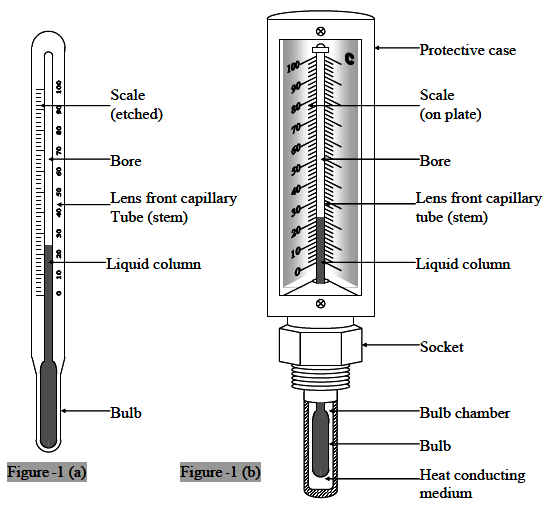The liquid in glass thermometer, is the most commonly used device to measure temperature and it is inexpensive to make and easy to use. The liquid in glass thermometer has a glass bulb attached to a sealed glass tube (also called the stem or capillary tube). A very thin opening, called a bore, exists from the bulb and extends down the centre of the tube. The bulb is typically filled with either mercury or red-coloured alcohol and is free to expand and rise up into the tube when the temperature increases, and to contract and move down the tube when the temperature decreases.
The background of the glass tube is covered with white enamel and the front of the glass tube forms a magnifying glass that enlarges the liquid column and facilitates with reading the temperature.
In Figure -1 (a), an all glass thermometer is depicted, with its scale etched into the stem. Liquid in glass thermometers are fragile and for industrial use, the thermometer is mounted in a protective housing and the scale is engraved on a separate plate that is part of the protective case. An industrial thermometer is shown in Figure -1 (b).
Liquid Temperature range (Celsius)
Mercury -35 to +510
Alcohol -80 to +70
Pentane -200 to +30
Toluene -80 to +100
Creosote -5 to +200
